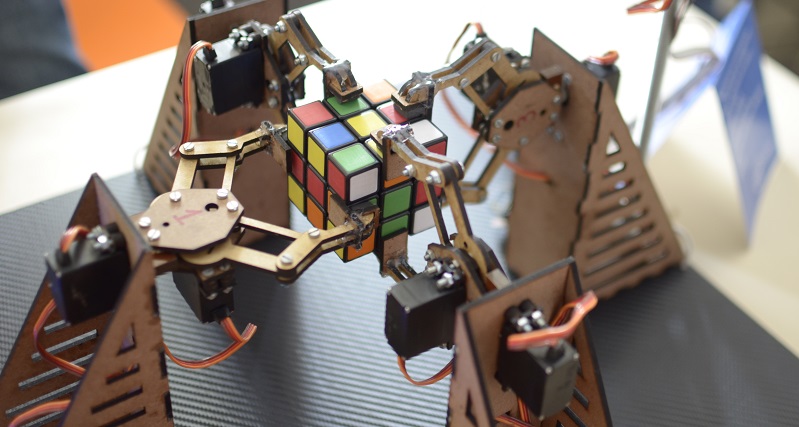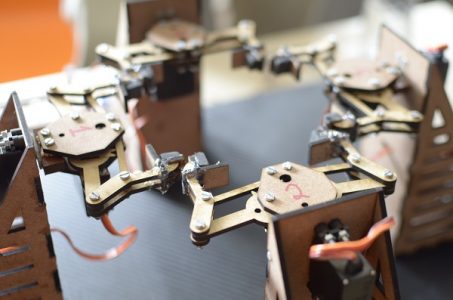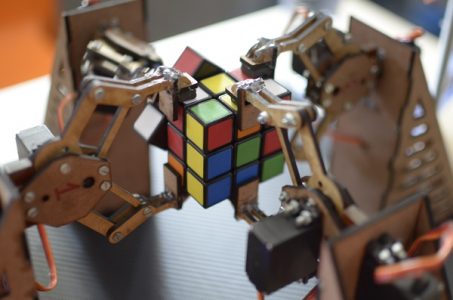Twin brothers and robotics enthusiasts Brett and Cameron Pym have seen their fair share of Rubik’s Cube solving robots all over the internet but never got around to making their own version. Until now.
When the fourth year University of Cape Townmegatronics students were invited to showcase at Maker Faire, they saw it as the perfect opportunity to finally give their own Rubik’s Cube robot a go, and show it off to the world.

“We did a week of training with Intel who introduced Galileo to students at UCT, who then approached UCT and told them about Maker Faire and were looking for students to present cool projects that use the Galileo,” says Brett.
The Intel Galileo is a microcontroller board based on the Intel Quark SoC X1000 Application Processor, a 32-bit Intel Pentium-class system on a chip.
The Pimm twins’ robot is a mechanical contraption that attempts to solve a Rubik’s Cube using a camera and several servo motors and a rig.
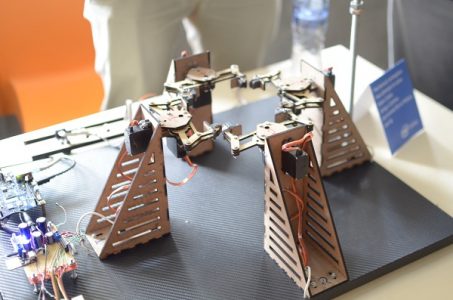
“We had two weeks to build the robot, which meant a lot of sleepless nights,” Brett adds.
The twins laser designed the robot body parts completely in 3D using Google SketchUp and exported using a plug-in into a 2D laser cutting programme that made all the parts. The grippers and base are made from super wood, which is very strong. And in case anything goes wrong with any of the robots parts, they have spares they can use to replace them.
“The Intel Galileo receives a string of the Cube’s colours from the computer, it sorts that string out, sends it via a web server on which we downloaded to our laptop via the router – we make use of the Ethernet port,” explains Brett. “The server on the laptop sends the right combinations to the robot and the Galileo does a lot of string manipulation on that which is easier to decode. The Galileo just sends those commands to the Arduino and it will run the robot hands’ moves.”
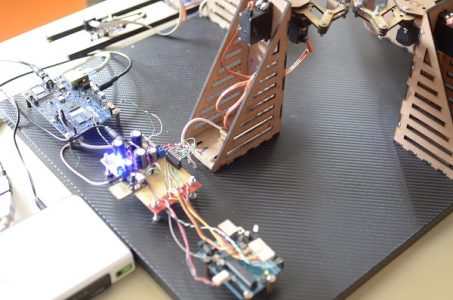
Although the robot works using a camera, the Pimms unfortunately couldn’t use it down at Maker Faire because of the light settings in the room.
“Our camera works in a constant light environment, so it scans one row at a time and sends it back to the computer, which can then rotate the cube until it’s done all the sides. It would decode those colours into a string which the Galileo understands, it will process that, send it via the web router, get the solution, process that again into a usable solution and send it to the Arduino which will run the moves.”
The robot is not about how fast it can solve the Cube, the brothers say, it’s about solving it in the least amount of moves possible, which is 20 in the case of their robot.
In future the Pym brothers look forward to completing their studies in megatronics and building more robots. Let’s just hope they aren’t the type of robots that will kill us.

